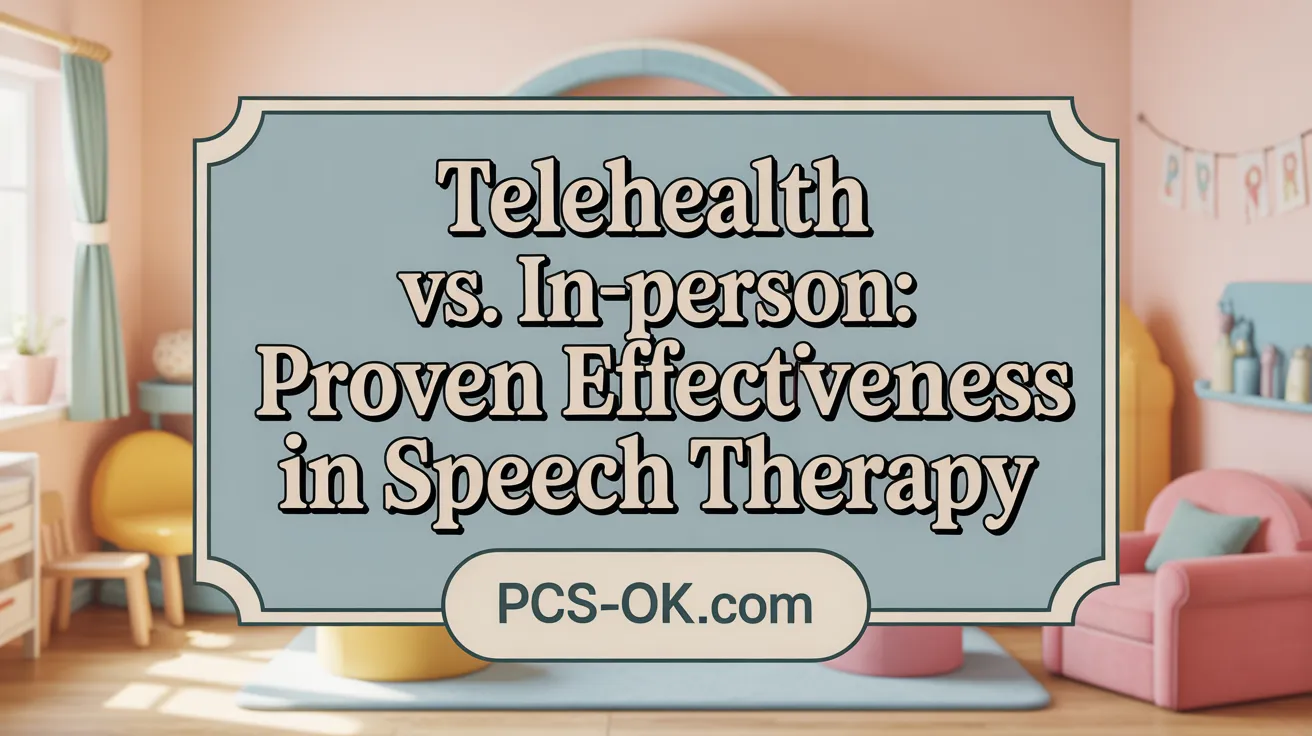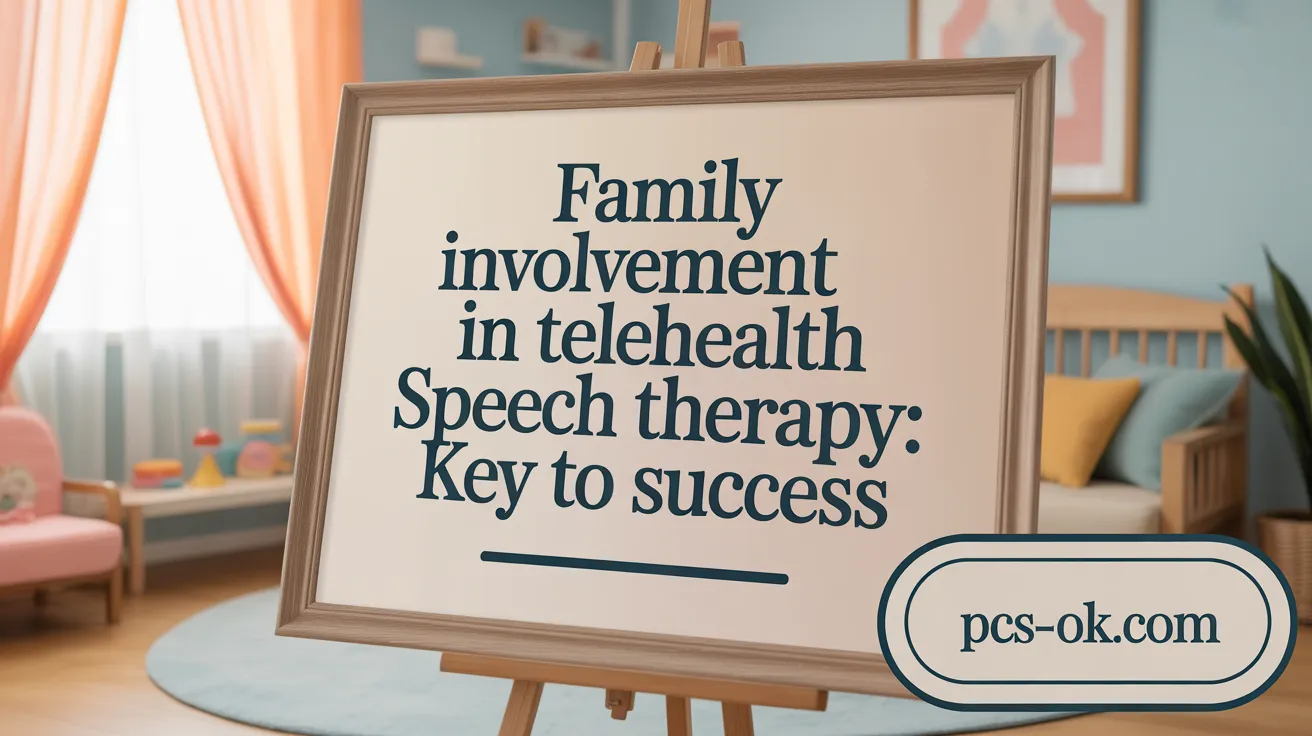The Benefits of Telehealth Speech Therapy for Families
Embracing the Future of Speech Therapy
Telehealth speech therapy has emerged as a transformative approach for families seeking convenient, effective, and accessible speech-language services. With the ability to connect therapists and clients remotely, this innovative model addresses many traditional barriers, offering customized support right in the comfort of home. This article explores the wide-ranging benefits of telehealth speech therapy for families, examining its effectiveness, convenience, safety, and evolving trends shaping its future.
Unlocking Accessibility and Convenience for Families

What are the benefits of telehealth speech therapy for families?
Telehealth speech therapy provides numerous advantages for families by making essential services more accessible and convenient. It removes the need for long trips to clinics, saving time and transportation costs. Especially helpful for families living in rural areas or with mobility challenges, teletherapy also minimizes health risks by reducing exposure to illnesses like COVID-19.
Children often feel more comfortable working from home, which can boost engagement and progress. Parents and caregivers actively participate, sharing insights and supporting their child’s development throughout sessions. This collaborative approach enhances the effectiveness of therapy and ensures consistency. Additionally, telehealth can lead to cost savings on travel, missed work, and other expenses, making regular speech therapy more feasible.
Overall, virtual speech therapy offers personalized, effective interventions that fit seamlessly into family routines, fostering better developmental outcomes for children.
How does telehealth speech therapy provide convenience and scheduling flexibility?
Telehealth services excel at offering flexibility that suits busy family schedules. Families can arrange sessions at times that work best, including evenings and weekends, without worrying about transportation or clinic hours. This flexibility ensures children can attend regularly, maintaining momentum in their speech and language development.
Scheduling is simplified through online platforms, allowing easy appointment setting and adjustments. Since therapy takes place in familiar home environments, children often feel more relaxed, which can further enhance progress. Additionally, virtual sessions enable remote observation and participation by parents, making therapy more natural and personalized.
This adaptable approach helps overcome logistical barriers, promoting consistent engagement and making speech therapy accessible for all families.
What safety and accessibility considerations are associated with telehealth speech therapy?
Ensuring safety during telehealth sessions involves using encrypted, secure platforms that protect privacy and meet legal standards such as HIPAA. Practitioners need to perform risk assessments, obtain informed consent that covers data security, and verify the privacy of the client’s environment. Creating a quiet, private space for sessions is crucial to maintain confidentiality.
Accessibility involves adhering to laws like the ADA and Section 1557, which require accommodations for individuals with disabilities. This may include providing sign language interpreters, captioning, or other modifications. Therapists should tailor their approaches to meet each child’s specific needs, considering their environment, language skills, and any assistive technologies.
Proactive planning, including emergency protocols and clear communication, ensures both safety and equitable access. By addressing these aspects, telehealth can serve as a safe, inclusive platform for speech and language therapy.
Demonstrated Effectiveness: Telehealth Versus In-Person Therapy

How effective is telehealth speech therapy compared to in-person therapy?
Research shows that telehealth speech therapy performs similarly to traditional in-person approaches in many cases. Multiple studies, including systematic reviews, have found that children and adults receiving remote therapy achieve comparable improvements in speech clarity, language understanding, and social communication.
Evaluations using standardized tools like the Goldman Fristoe Test of Articulation demonstrate no significant difference in progress between virtual and face-to-face sessions. Participants and their families report high satisfaction levels, appreciating the flexibility, convenience, and accessibility that telehealth offers.
In particular, children tend to engage well with interactive online activities, resulting in effective learning and skill development. When tailored to individual needs with appropriate supervision and training, teletherapy emerges as a reliable alternative. Overall, evidence supports the conclusion that remote speech therapy can deliver outcomes on par with in-person services.
What impact does telehealth speech therapy have on communication skills and quality of life?
Telehealth speech therapy positively affects communication abilities and enhances overall quality of life for many individuals. For conditions like stuttering, Parkinson’s disease, and dysphagia after a stroke, therapy delivered via telehealth has led to significant improvements similar to traditional methods.
Families and patients often highlight increased access, especially for those in rural or underserved areas, as a major benefit. This expanded access enables earlier intervention, which often correlates with better results.
Furthermore, teletherapy promotes greater participation in social activities, supports academic achievement, and boosts confidence by improving communication skills. While some technical challenges exist, the overall impact of telehealth services is overwhelmingly positive, making it a valuable alternative for enhancing social functioning and life satisfaction.
Engaging Families: A Collaborative Approach to Therapy

How are families involved and engaged in telehealth speech therapy sessions?
Families play a central role in telehealth speech therapy, actively participating alongside the therapist to support their child’s development. During sessions, parents often take on roles as instructors, facilitators, and coaches, applying techniques learned in therapy to daily routines.
This involvement helps children practice speech and language skills in familiar settings, boosting motivation and retention. It also enables parents to reinforce strategies consistently at home, making therapy more effective.
Telehealth platforms foster strong communication channels between families and therapists. Regular feedback, updates, and support ensure parents feel confident and empowered to continue their child’s therapy outside of sessions.
Parental engagement also promotes a collaborative relationship, where families can share insights, voice concerns, and adapt approaches based on their child’s unique needs. Such active participation not only enhances the child’s progress but strengthens the overall therapeutic alliance.
While some families may face initial technological hurdles, ongoing support helps overcome these challenges, ensuring everyone benefits from a family-centered approach. This collaboration makes speech therapy more accessible, personalized, and effective for children and their families.
Telehealth’s Role During the COVID-19 Pandemic and Beyond
How was telehealth speech therapy implemented and applied during the COVID-19 pandemic?
During the COVID-19 pandemic, speech therapy services quickly transitioned to telehealth to maintain continuity of care while adhering to safety guidelines. Clinicians shifted from traditional face-to-face sessions to remote formats, utilizing videoconferencing platforms like Zoom to connect with children and their families.
These services were delivered through various models, including real-time sessions, recorded activities for independent practice, and hybrid approaches combining in-person and virtual visits. This rapid adoption was driven by the need to provide uninterrupted therapy, especially for children with developmental delays or speech and language disorders.
Despite facing initial hurdles like technological challenges, lack of established guidelines, and managing children remotely, therapists and organizations adapted through teamwork, trial and error, and additional training. This effort led to increased confidence and a broader acceptance of telepractice.
Research underscores that telehealth provided comparable outcomes to in-person therapy in many cases, with children experiencing significant improvements in speech and language skills. Parents and therapists reported high satisfaction levels owing to the convenience, safety, and comfort of conducting therapy from home.
Looking ahead, many health organizations and clinicians support sustaining telehealth services beyond the pandemic. Such implementations are seen as an opportunity to enhance access for rural and underserved populations, reduce treatment costs, and help clear backlogs of ongoing therapy needs. However, ongoing efforts are necessary to address infrastructural barriers and ensure effective training for providers to maximize telehealth’s benefits.
Emerging Trends and the Future of Virtual Speech Therapy
What are the current trends and future prospects of virtual speech therapy?
Virtual speech therapy is rapidly evolving with the latest technological advancements, making therapy sessions more engaging and efficient. Today’s trends include the use of artificial intelligence (AI), virtual reality (VR), and gamified platforms, which personalize the experience and keep children motivated. AI tools now help with early detection of speech delays, provide instant feedback, and improve assessment accuracy.
Digital applications and augmentative and alternative communication (AAC) devices are also boosting progress tracking and facilitating communication for children with diverse needs. Therapy delivery has shifted from solely in-person sessions to flexible, hybrid models that combine face-to-face with remote care, broadening access especially across different states thanks to interstate licensure agreements.
Focusing on inclusivity, there is a move toward bilingual and culturally sensitive approaches, ensuring services cater to varied populations. Early intervention remains a priority, with technology enabling more prompt and tailored treatment.
Looking ahead, future developments include more sophisticated tech innovations, better training for therapists on new tools, and integrated care models that work across health and education sectors. These advancements aim to make speech therapy more accessible, effective, and personalized, ultimately improving outcomes for children and other clients in a wider range of settings.
Conclusion: Empowering Families Through Telehealth
Telehealth speech therapy stands as a powerful tool that bridges gaps in access, enhances convenience, and delivers effective, engaging care tailored to children’s unique needs. It empowers families by fostering active involvement, reduces health risks, and demonstrates clinical outcomes on par with traditional therapy. As technology continues to evolve and integration deepens, telehealth is poised to become a lasting complement to in-person services, supporting diverse learners in often underserved locations. Families seeking flexible, safe, and family-centered speech therapy options can confidently turn to telehealth as a cornerstone of modern therapeutic care.
References
- Why More Families Are Choosing Telehealth for Speech …
- Face-to-face and Telespeech Therapy Services for …
- Exploring the Effectiveness of Telehealth Speech …
- 16 Reasons Teletherapy Benefits a Speech-Language …
- Five Fantastic Benefits of Online Speech Therapy Families …
- Telehealth for Speech Therapy
- The Efficacy of Telehealth-Delivered Speech and …
- The Unique Benefits of Virtual Speech Therapy
- Telehealth Speech Therapy: The Future is Here with …
